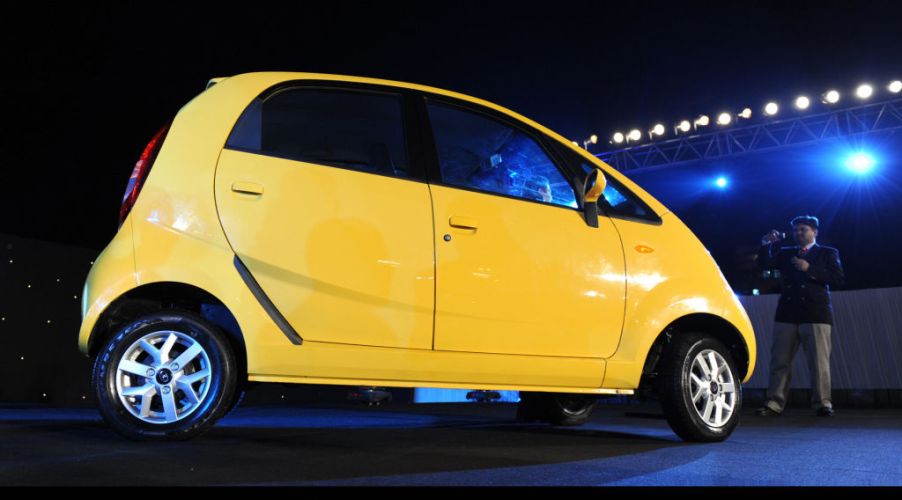
What Is the Cheapest Car in the World?
Despite the fall of car stocks in recent years, the vehicles themselves aren’t getting cheaper. The average cost of a small car is usually around $17k, and that’s not including all the maintenance fees and car insurance payments you’ll need to make.
It may be easy to snag a used car at a relatively low price, but with used cars comes the risk of unforeseen repairs that could end up costing just as much as you paid for it.
Buying and taking care of a car is an expensive but necessary for many people who don’t have access to public transportation. If you live in the United States, the cheapest new car you can buy is the newest Chevrolet Spark, with an MSRP of a little over $13k.
However, if you happen to live in India, you may be able to pick up the cheapest car in the world: the Tata Nano.
The Nano’s development
In India, the number of people who own a car is far smaller than that of the U.S., with only 2% owning a car in a population of over a billion. The Nano was developed by Tata Motors with the goal to help families be able to have their own vehicles at an affordable price.
The first Nano only cost 100,000 rupees, a little over $1400 USD. The price increased a little over its ten-year run, but it still managed to stay well below five digits in USD. The latest Nano costs a mere $3,338.87.
The Nano cut as many costs as it could get away with for that low base price tag. It’s a compact car with four seats and a very simple dashboard. The first Nano’s hatchback could not be opened from the outside, only accessible through the interior, and also didn’t include a power steering system.
It also features only one windshield wiper instead of two and only the driver’s side has a side-view mirror, though a mirror for the passenger side was added in later models. For most Nanos, air conditioning and radio are optional features.
The base Nano has a small but efficient 2-cylinder engine capable of 37 hp and 38 lb-ft of torque. The Tata Nano also gets incredible fuel economy, scoring 55 mpg on city roads. It doesn’t go very fast, with a maximum speed of 65 mph and 0-30 acceleration in approximately 30 seconds, but speed isn’t a requirement on the crowded streets of India.
Why you won’t see a Nano stateside
Unfortunately, the president of Tata has stated that the production of the Nano will cease after 2019. Despite its good specifications, it was met with a lukewarm response from Indian drivers. They opted for more affordable options, like motorcycles, which meant that there was no incentive for the company to make more vehicles. It went from 70,000 cars produced during its introductory year to just one vehicle in 2018.
In addition to its minuscule demand, the Nano faced other issues. Its initial release was pushed back by two years when it had to build the factory in a new state due to discontent from local farmers. Once the cars were built, the Nanos received some of the poorest crash test results ever recorded. This was probably due to the fact that none of its models included airbags. There were also multiple reports from consumers of their Nanos unexpectedly catching fire.
While the Nano managed to achieve the title of the cheapest car in the world, it’s not slated to make a comeback in the future. However, it paved the way for the future of affordable cars in the European market. If these models are successful, a new car for under $10k in the U.S. could happen.



